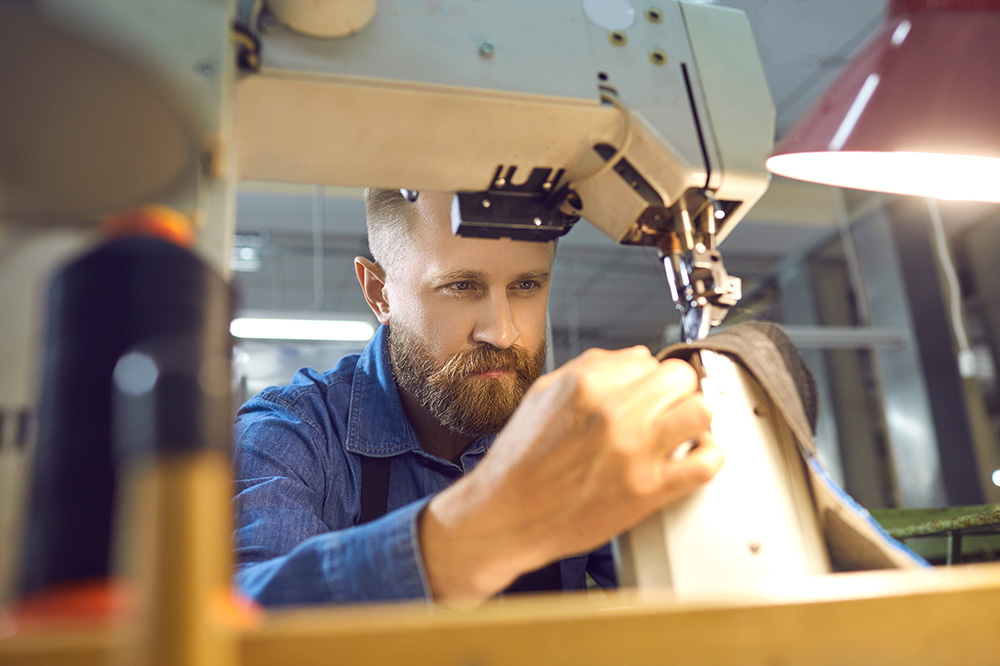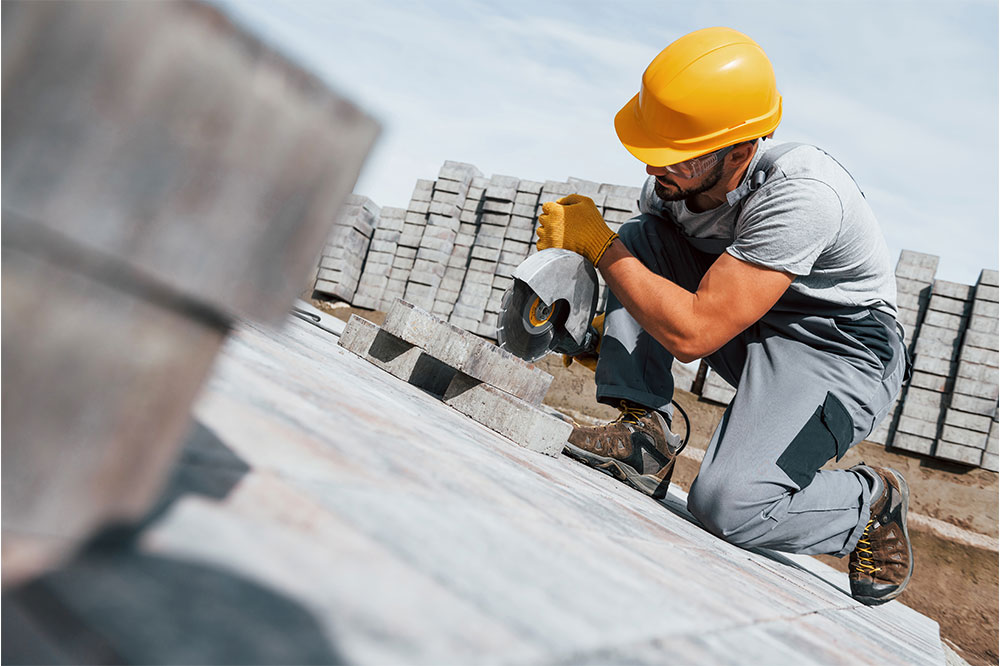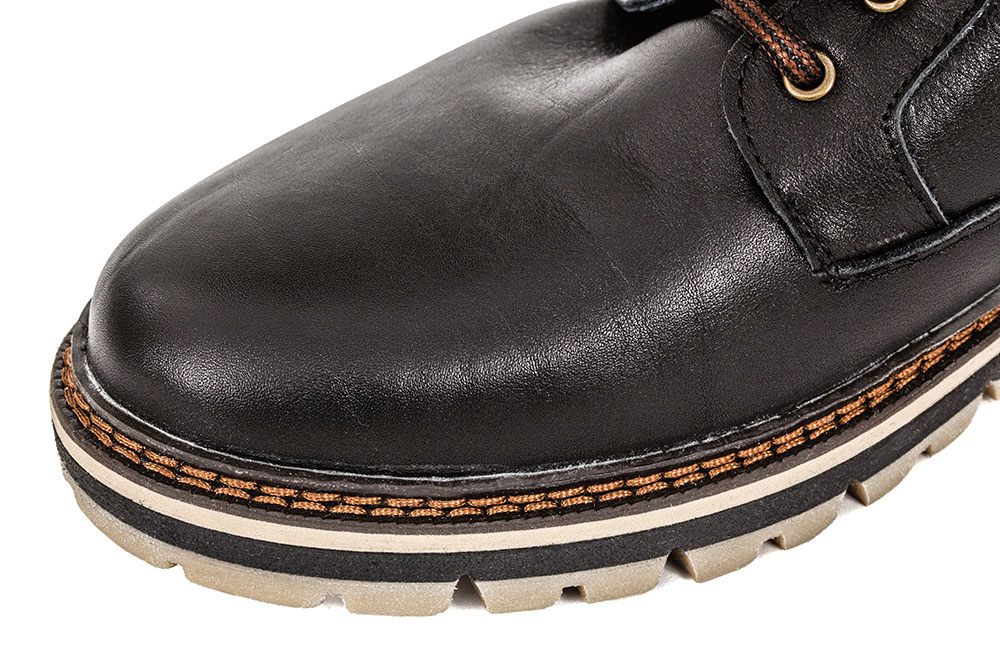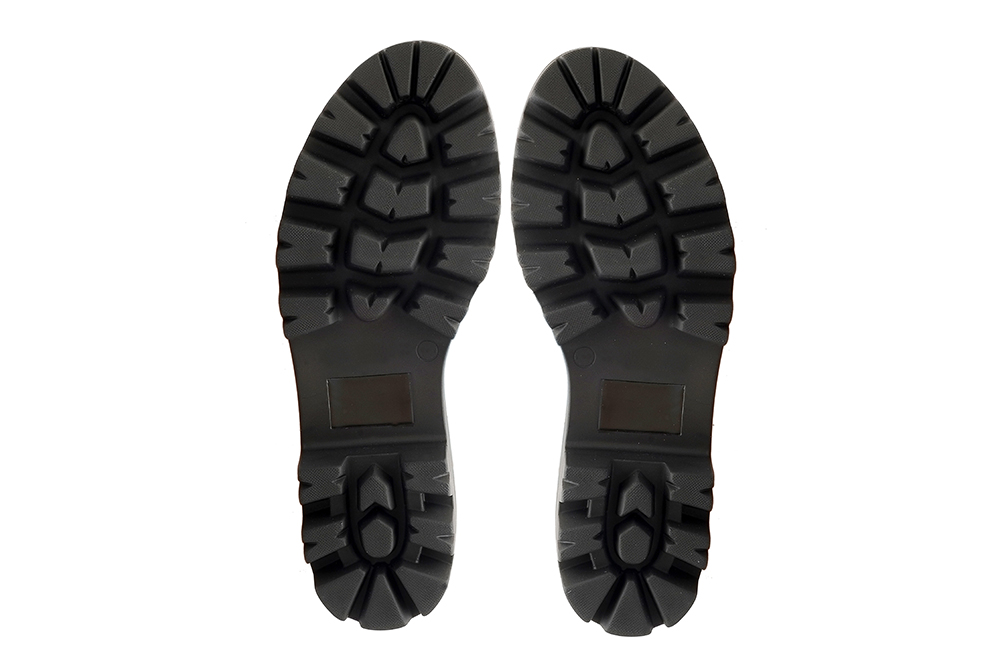Work Boot Construction Methods | Expert Guide
Posted by Cara Spindler on Aug 10th 2023
Best Work Boot Construction Methods

Work boots and work shoes are designed to provide comfort and protection for workers across an array of various industries and workplace environments. Depending on your jobsite, and/or the job functions you will be doing, the construction method used in the work boots you choose can matter greatly, and can affect your safety, your comfort and even your foot health.
Workers in Home Construction may opt for a work boot made with a flexible construction method, for when they have to bend or crouch on the job, while Loggers and Linesmen may opt for a stiffer, more rigid construction method for enhanced stabilization and support. Consider what would be best for your jobsite based on the following expert information.
Common Work Boot Construction Methods
The commonly used methods of Work Boot Construction listed below each have their advantages, as well as their disadvantages. Our professional advice that follows will help you choose the style of boot construction that makes the most sense for your specific jobsite.
- Goodyear Welt Construction
- Cement Construction
- Stitch-down Construction
- Injection-Molded Construction
Goodyear Welt Construction
The term "Goodyear Construction" or "Goodyear Welt" refers to a method of work boot construction that was developed and popularized by the Goodyear Tire & Rubber Company. It is a technique commonly associated with the making of high-quality work boots.
This construction method was invented by Charles Goodyear Jr., the son of Charles Goodyear, who was renowned for his contributions to the development of vulcanized rubber. Charles Goodyear Jr. applied his knowledge of rubber to create a durable and long-lasting method for attaching the outsole of a work boot to its upper.
Goodyear Welt Construction is a popular method known for its durability and the ability for the worker to resole the boots once the tread starts to drastically wear down. The process involves stitching the upper part of the boot to the outsole using a welt, which is a strip of leather or synthetic material. Welted boots are often associated with classic and timeless style. The visible stitching and welt give them a distinct aesthetic appeal. Additionally, welted boots are often handcrafted using top-of-the-line materials, further adding to their overall value and long-lasting durability.
Goodyear Welt Construction Process

-
A strip of leather (the welt) is sewn to both the upper part of the boot and the insole that creates a space between the insole and the outsole.
- This space is filled with cork or other materials, for added comfort and insulation.
- The outsole is stitched to the welt, providing a secure attachment and making it easier to replace the sole when it wears out.
Pros of Goodyear Welt Construction
- Durability:
The stitching method used creates a very strong bond between the upper and the outsole, making the boots highly durable. The welt construction adds a layer of durability to the work boots by providing a strong and secure attachment between the upper and the outsole. This construction method is known for its strength and longevity, making the boots more resistant to wear and tear.
- Resoleability:
One of the significant advantages of a welted boot is its reparability. In case of sole damage or wear, the welt allows for easy replacement of the outsole without affecting the upper. This means that the boot can be resoled multiple times, extending its overall lifespan and saving money in the long run. However, repairs must be made as soon as possible when needed, before the leather wears too much away from the outsole leaving nothing to work with in the repair process.
- Water Resistance:
The welt stitching adds an extra layer of protection against water penetration. A properly constructed welt will enhance the water resistance of the boots. The welt actually creates a barrier that helps to prevent water from seeping into the boots through the sole's stitching. This is particularly advantageous if your job requires you to work outdoors in wet or rainy conditions, as it will help keep your feet dry and comfortable.
- Enhanced Stability and Support:
The welt construction adds stability and support to the work boots. The welt acts as a buffer between the upper and the outsole, providing additional rigidity and structure. This can be beneficial for those who require extra support, such as people who spend long hours on their feet or engage routinely in outdoor activities.
Cons of Good Year Welt Construction
While Good Year Welt Construction is a popular method for constructing work boots and offers several advantages, it also has some potential drawbacks. Here are a few cons to consider when wearing work boots made with Good Year Welt Construction:
- Cost:
Good Year Welt Construction tends to be more expensive compared to other construction methods. The intricate process and skilled craftsmanship required contribute to the higher cost of these boots. If you are on a tight budget, you may find that other types of work boots that will meet your needs that are more affordable.
- Stiffness and Break-in Period:
Work boots made with Good Year Welt Construction can be initially stiff and require a longer break-in period resulting in a less flexible boot during the initial stages of wear, but the boots will mold to your feet over time.
- Heavier Weight:
Good Year Welt Construction typically involves thicker and heavier materials, which can make the boots feel bulkier than with other construction methods. If you are constantly on the move, the weight of these boots may become a disadvantage.
- Limited Water Resistance:
While Good Year Welt Construction provides excellent durability and allows for easy resoling, it may not offer the same level of water resistance as work boots made with other construction methods such as Direct-Attach, or Cement Construction. This is because welt stitching, particularly in the presence of wear or damage, can allow moisture to seep into the boot more easily.
- Reduced Insulation:
The welt stitching used in Good Year Welt Construction creates a small gap between the outsole and the upper portion of the boot. This gap can reduce insulation, making the boots less effective in extremely cold weather conditions, so you may need additional insulation, or have to consider alternative construction methods when working in colder climates.
Cement Construction

Cement Construction, also known as Direct Attach or Adhesive Construction, involves bonding the outsoles of the work boots directly to their uppers with the use of a very strong adhesive that creates extremely flexible work boots.
Pros of Cement Construction
- Lightweight:
The absence of stitching makes cement construction boots much lighter in weight than other forms of methods, providing increased comfort and performance during long hours on the jobsite.
- Flexibility:
The cement bonding of a pair of work boots makes them extremely flexible, allowing for better ease of movement when bending and crouching while performing tasks on the jobsite.
- Quick Break-in:
Cement construction boots tend to have "out of the box" comfort and a shorter break-in period, requiring less time to adapt to the shape of the foot.
Cons of Cement Construction
- Durability:
Work boots constructed using Cement Bonding may not be as durable as other construction methods. The adhesive bond can weaken over time, especially when exposed to extreme conditions such as heavy use or when frequently exposed to water. This can lead to the outsoles detaching from the uppers, thereby reducing the overall lifespan of the work boots.
- Resoling Difficulty:
When the outsoles of a pair of Cement-Constructed work boot wears out, or gets damaged, it can be hard to replace or resole. The cement bond is not easily undone, and specialized equipment or professional expertise may be required to remove the old sole and attach a new one. This adds to the cost and inconvenience of maintaining the boots and if severe sole detachment or damage occurs, the work boots may be deemed irreparable.
- Waterproofing:
Cement Construction work boots generally have a higher risk of water penetration compared to other construction methods. While some Cement-Constructed boots may have additional waterproofing treatments or materials used in their production, the adhesive bond itself can be vulnerable to water seepage. This can result in wet feet and discomfort, particularly in very wet or rainy conditions.
- Lack of Breathability:
The Cement Construction method typically involves a direct attachment of the outsoles to the uppers, without any space or ventilation channels being possible between them. The result is limited breathability, which may lead to less effective moisture-management and the possibility of having sweaty feet. This can be a concern, especially during extended periods of wear, or if working in extremely hot environments.
Keep in mind that these are general considerations and not universal drawbacks of this construction method. The actual performance and durability of cement-constructed work boots can vary, depending upon the quality of materials used, the manufacturer's specific construction techniques, and the specific usage conditions on the jobsite.
Stitch-down Construction

The Stitch-down Construction method involves highly trained craftsmen stitching the uppers directly to the midsoles, which are then attached to the outsoles. The result is an extremely durable pair of work boots with extra built-in stability and the option to have them resoled at a later date
.
Pros of Stitch-down Construction
- Stability:
The stitching extends from the uppers down through the midsoles, providing enhanced stability and support.
- Reparability:
Stitch-down work boots can be easily repaired, as the stitching can be undone and restitched, if necessary.
- Shock Absorption:
The stitch-down construction on a pair of work boots allows for more shock absorption, thereby reducing the impact on the wearer's feet and joints.
Cons of Stitch-down Construction
- Limited Waterproofing
The stitching of the uppers directly to the midsoles creates small needle holes that may lead to water seepage into the boots. One remedy is to apply an external waterproofing directly onto the welt area of the work boots.
- Sole Replacement Difficulty
Resoling stitch-down work boots may need specialized equipment and skill, leading to higher resoling costs.
. - Less Flexibility and Longer Break-in Period
Stitch Down construction creates a stiffer work boot, which can affect comfort during the break-in period. However, after they have been worn and flexed repeatedly, the boots will break in and be more comfortable.
- Weight
Due to the direct stitching of the uppers to the midsoles, stitch-down construction can result in a slightly heavier pair of work boots.
- Labor Intensive
Stitch-down construction requires the skill of highly trained craftsmen, making for higher production costs, with the result being a higher ticket price on the retail shelf.
Injection-Molded Construction

Injection Molding is a process where the outsoles of the work boots are first molded and then attached directly to the uppers. The process of attaching injection-molded outsoles to a pair of work boots typically involves several steps, which are listed below.
Injection-Molded Construction Process
-
The outsoles are created through an injection-molding process, where molten rubber or other materials are injected into a mold. This forms the desired outsole shape.
-
The boot's uppers, which are the portion of the boots that covers the foot and ankle areas, are prepared for attaching it to the outsoles. This involves cleaning the surfaces and ensuring they are free of any particles, or contaminants.
-
A specialized adhesive, or bonding agent, is applied to both the bottoms of the outsoles and the upper part of the work boots where the outsoles will be attached.
-
The prepared outsoles are carefully aligned and pressed onto the work boot's uppers. A heavy application of pressure ensures good contact between the adhesive layers and helps to create its extremely strong bond. Many manufacturers will use hydraulic presses or specialized machinery at this stage to apply the required force.
-
The work boots are typically placed into an oven or otherwise subjected to heat to cure the adhesive. This helps the adhesive fully bond and harden up.
-
Any excess adhesive or material is trimmed off and cleaned up.
-
The work boots may also undergo additional finishing processes, such as; polishing, stitching, or adding protective toe caps, depending on the work boot's specific design and requirements.
Pros of Injection-Molded Construction
- Waterproofing:
The seamless design of Injection-Molded boots provides excellent waterproofing capabilities, keeping feet dry under any type of wet weather conditions
- Chemical Resistance:
The materials used in injection-molded work boots are often resistant to various chemicals, making them suitable for industries where exposure to hazardous substances is common.
- Enhanced Protection:
The one-piece construction of the work boot offers increased protection against punctures and impacts.
While injection-molded work boots offer several advantages, they also come with a few potential disadvantages.
Cons of Injection-Molded Construction
- Limited Customization:
Injection-molded work boots are mass-produced, which means they generally lack the level of customization needed for specific foot conditions or requirements, such as wider feet or those that need arch support, so it may be challenging to find a perfect fit.
- Reduced Breathability:
Injection-molded work boots often have one-piece construction, including the outsoles and uppers, which can limit airflow and ventilation. This can result in decreased breathability, leading to sweaty feet and potential discomfort during extended periods of wear.
- Less Flexibility:
The manufacturing process for injection-molded work boots typically results in a more rigid structure. While this rigidity provides stability and protection, it can hamper the natural flexibility of the feet, potentially hindering agility and movement in certain work environments.
- Limited Reparability:
Injection-molded work boots are usually made of a single molded piece, which means they lack the ability to be easily repaired or resoled. If the outsoles wear out, or the uppers becomes damaged, you may need to replace the pair of work boots instead of simply repairing it.
- Longer Break-in Period:
Due to their rigid construction, injection-molded work boots often require a longer break-in period compared to other types of boots. This means you might experience some discomfort or blisters until the boots naturally conform to your feet.
It's important to note that not all injection-molded work boots will exhibit these cons to the same extent, as there can be variations in materials, design, and manufacturing processes. It's recommended to try on different boots, consider user reviews, and choose a pair that best suits your specific needs and preferences.
Final Thoughts
It is important to be aware that different work boot manufacturers may use their own variations or combinations of these construction methods resulting in boots with unique features and benefits. Additionally, the choice of construction method you choose should depend on your specific work environment and the main requirements of your job.

